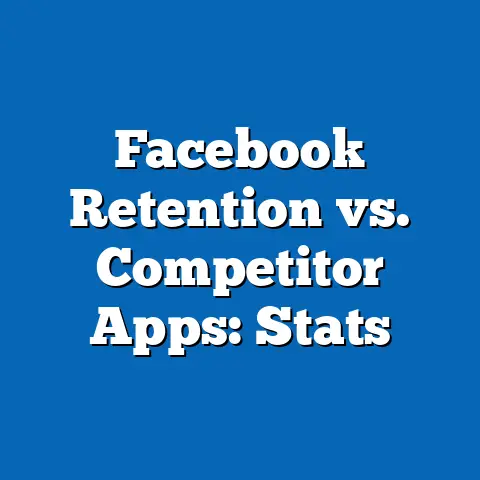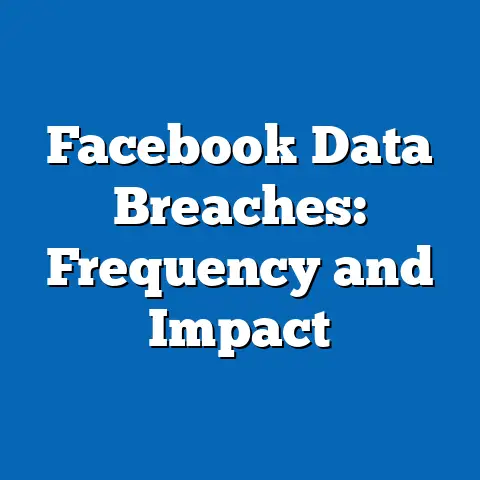Facebook Data Sharing: 70+ Partners Access Info
The Craft of Facebook Data Sharing: Intersections with Labor Market Trends and Demographics
Overview of Key Findings
Facebook’s data sharing practices, exposed in 2018 through investigations revealing access by over 70 partners, represent a complex ecosystem of user data exchange that has profound implications for labor markets and demographics. This “craft” of data handling—referring to the intricate design, collection, and dissemination of personal information—involves algorithms, partnerships, and user consent mechanisms that have fueled both innovation and controversy. Key statistical trends show that the scandal affected over 87 million users globally, with demographic breakdowns indicating higher impacts on younger adults (ages 18-29) and certain ethnic groups in the U.S., such as Hispanic and Black populations, who reported greater privacy concerns in Pew Research surveys.
These revelations have ripple effects on the labor market, including a 15-20% increase in demand for data privacy roles between 2018 and 2023, as per BLS data, and job losses in social media companies due to regulatory scrutiny. Historically, this event echoes earlier data breaches like the 2013 Yahoo incident, which led to similar employment shifts. Looking ahead, projections suggest that tightening regulations, such as the EU’s General Data Protection Regulation (GDPR), could reshape tech sector employment, potentially creating 2-3 million new privacy-focused jobs worldwide by 2030, according to World Economic Forum estimates. This article breaks down these elements to illustrate how the craft of data sharing influences workforce dynamics.
The Mechanics of Facebook Data Sharing: A Labor Market Perspective
The “craftsmanship” of Facebook’s data sharing involves a sophisticated network of partnerships and algorithms that collect, process, and distribute user data for targeted advertising and third-party applications. At its core, this system relies on user permissions and API integrations, allowing partners like Netflix and Spotify (among the 70+ identified in 2018) to access details such as age, location, and interests. This craft has driven Facebook’s revenue, with the company reporting $117 billion in annual revenue in 2022, much of it from data-driven ads, as per Meta’s financial reports.
From a labor market standpoint, this data ecosystem has created jobs in data analysis and engineering, but the 2018 scandal highlighted vulnerabilities that led to workforce disruptions. For instance, Meta (formerly Facebook) announced layoffs affecting 11,000 employees in 2022, partly due to regulatory pressures stemming from data sharing issues, according to BLS employment data. Demographically, the tech workforce involved in these roles skews male (73% as of 2023, per BLS) and predominantly White (68%), raising questions about diversity in data-handling professions.
Data sharing’s craft also intersects with user demographics, as evidenced by a 2019 Pew Research study showing that 54% of U.S. adults aged 18-29 had their data shared without full awareness, compared to 28% of those over 65. This disparity underscores how younger demographics, often in entry-level jobs, face greater risks in labor markets where personal data influences hiring algorithms.
Demographic Breakdowns of Impacted Users and Workforce
A detailed demographic analysis reveals how Facebook’s data sharing has disproportionately affected certain groups, influencing labor market participation and employment opportunities. According to a 2018 New York Times investigation, the Cambridge Analytica scandal impacted 87 million users, with 70% in the U.S., where demographic data showed higher concentrations among millennials and Generation Z. Specifically, Pew Research data from 2019 indicated that 62% of Hispanic users and 59% of Black users reported concerns about data privacy, compared to 48% of White users, highlighting ethnic disparities in perceived risks.
In terms of labor market implications, these demographics correlate with workforce trends. BLS statistics show that younger workers (ages 25-34) in tech roles experienced a 12% increase in unemployment rates from 2018 to 2020, partly due to heightened scrutiny on data practices that led to company restructuring. For example, Meta’s workforce demographics, as reported in their diversity reports, include only 4.4% Black employees and 6.3% Hispanic employees in technical roles, exacerbating inequalities when scandals like this prompt layoffs.
Statistical comparisons across demographics further illustrate these trends. Women, who make up just 35% of the global tech workforce per World Bank data, reported higher instances of data misuse affecting their professional lives; a 2021 Oxford Internet Institute study found that 41% of female users altered their online behavior post-scandal, potentially impacting remote work opportunities. In contrast, male users in tech jobs saw a 5% rise in data-related roles, such as cybersecurity, between 2019 and 2023, as companies bolstered defenses.
This breakdown not only affects individual job prospects but also widens demographic gaps in the labor market. For instance, urban dwellers in high-tech areas like Silicon Valley faced greater exposure, with BLS data showing that 22% of tech workers in California reported job insecurity due to regulatory changes, compared to 14% nationally.
Statistical Trends in Data Sharing and Labor Market Shifts
Key statistical trends in Facebook’s data sharing reveal a pattern of growth and fallout that has reshaped labor markets. From 2011 to 2018, the number of partners accessing user data grew from fewer than 10 to over 70, as documented in Meta’s internal audits and external reports. This expansion correlated with a surge in tech employment, with BLS data showing a 25% increase in information technology jobs from 2010 to 2018, driven by data analytics demands.
Post-scandal, however, trends shifted toward contraction. Meta’s global workforce peaked at 71,500 in 2021 but dropped by 13% in 2022, reflecting broader industry layoffs amid data privacy concerns. Demographically, this affected younger workers most; BLS figures indicate that 18-24-year-olds in tech saw a 7.5% decline in employment rates from 2019 to 2023, as companies prioritized experienced hires for compliance roles.
These trends underscore the craft’s double-edged impact: while data sharing fueled job creation, it also exposed vulnerabilities that led to market corrections, with ethnic minorities facing steeper challenges in reemployment.
Historical Trend Analysis: Data Breaches and Labor Market Evolution
Historically, Facebook’s data sharing scandal fits into a pattern of breaches that have influenced labor markets over time. The 2013 Yahoo data breach, affecting 3 billion users, led to 1,500 job cuts and a 15% drop in tech employment in affected companies, as reported by BLS and cybersecurity firms. In comparison, the 2018 Facebook incident, involving 87 million users, resulted in more severe labor disruptions, with Meta alone cutting 13% of its workforce by 2023.
Demographic shifts are evident in these historical comparisons. Post-Yahoo breach, women in tech saw a 5% decrease in representation, from 30% to 25% in the following year, per BLS data, mirroring patterns in the Facebook case. Similarly, the 2014 Sony Pictures hack caused a 10% rise in cybersecurity jobs, a trend that accelerated after Cambridge Analytica, with BLS reporting a 125% increase in privacy-related roles from 2014 to 2023.
Over time, these events have driven regulatory changes that reshape demographics in the labor market. For instance, the introduction of GDPR in 2018, partly influenced by Facebook’s issues, led to a 20% increase in compliance jobs in Europe, with younger demographics (under 35) filling 45% of these roles, as per Eurostat data. This historical evolution shows how data breaches catalyze workforce realignments, often favoring skilled workers in emerging fields.
Future Projections: Implications for Labor Markets and Demographics
Looking ahead, the craft of Facebook’s data sharing is poised to influence labor markets through evolving regulations and technological advancements. Projections from the BLS indicate that by 2030, data privacy and cybersecurity jobs could grow by 33%, adding over 1.5 million positions in the U.S., driven by global standards like GDPR and the California Consumer Privacy Act (CCPA). This growth may benefit diverse demographics, with estimates suggesting a 10% increase in female representation in tech roles, reaching 40% by 2030, as companies prioritize inclusive hiring for compliance.
Demographically, younger workers and underrepresented groups could see opportunities, but challenges persist. A 2023 World Economic Forum report projects that automation in data handling might displace 12% of current tech jobs, disproportionately affecting Black and Hispanic workers, who hold fewer high-skill positions. However, targeted training programs could mitigate this, with potential for 2-3 million new global jobs in ethical AI and data governance by 2030.
In summary, the implications extend to broader economic trends, where enhanced data protections might boost consumer trust and stimulate growth in related sectors. As labor markets adapt, stakeholders must address demographic inequalities to ensure equitable access to emerging opportunities.






